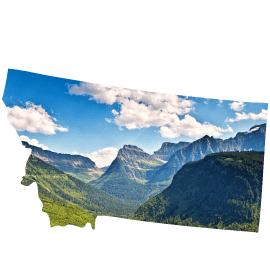Alternate Route Usage and Providers: Montana
Expanding the Pool of Teachers Policy
Analysis of Montana's policies
Although Montana does not limit the usage of its alternate route, it does place restrictions on providers.
There are no grade-level, subject, or geographic restrictions for candidates working under the Class 5 Alternative License. Montana is commended for having no restrictions on the usage of its alternate route with regard to subject, grade or geographic areas.
All teacher preparation programs, traditional and alternate route, must be accredited by Montana based on NCATE standards. Further, the specific requirements are articulated in terms of credit hours, effectively precluding non-higher education providers.
Recommendations for Montana
Encourage diversity of alternate route providers.
Montana should specifically authorize alternate route programs run by local school districts and nonprofits, as well as institutions of higher education. A good diversity of providers helps all programs, both university- and non-university-based, to improve.
State response to our analysis
Montana declined to respond to NCTQ's analyses.
Select another topic
Delivering Well Prepared Teachers
- Admission into Preparation Programs
- Elementary Teacher Preparation
- Elementary Teacher Preparation in Reading Instruction
- Elementary Teacher Preparation in Mathematics
- Middle School Teacher Preparation
- Secondary Teacher Preparation
- Secondary Teacher Preparation in Science
- Secondary Teacher Preparation in Social Studies
- Special Education Teacher Preparation
- Assessing Professional Knowledge
- Student Teaching
- Teacher Preparation Program Accountability
Expanding the Pool of Teachers
Identifying Effective Teachers
- State Data Systems
- Evaluation of Effectiveness
- Frequency of Evaluations
- Tenure
- Licensure Advancement
- Equitable Distribution

